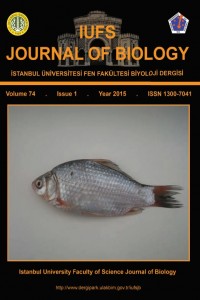Phenolic composition and antibacterial activity of crude methanolic Calendula officinalis flower extract against plant pathogenic bacteria
Abstract
Plant-derived compounds comprise diverse biological activities with different mechanisms of actions. Aim of this study was to comparatively evaluate antibacterial activities of methanol and aqueous flower and leaf extracts of Calendula officinalis (pot marigold) on plant-borne pathogens, with total phenolic contents and analysis of phenolics. Flower methanol and aqueous extracts had activity against 4 and 5 strains, respectively out of 11 phytopathogens tested. Highest activity was obtained with methanol extract of flower against E. amylovara and C. michiganensis in all strains tested with 256 and 512 µg/mL minimum inhibitory concentrations, respectively. Total phenolic content of flower extracts were higher than leaf extracts, and the methanol extract of the flower had the highest total phenols among four extracts obtained. Two flower extracts with antibacterial activity were tested for phenolic content. Chlorogenic acid, caffeic acid, rutin, and salicylic acid were common in both methanol and aqueous flower extracts. Gallic acid was only present in methanol extract, whereas vanillic acid was present in the aqueous extract. Higher antibacterial activity of the methanol extract may be correlated to the considerably higher relative rutin amount. Considering eco-safety and effectiveness, antibacterial activities of plant extracts would be important in phytopathogen control.
Details
| Journal Section | Research Articles |
|---|---|
| Authors | |
| Publication Date | November 22, 2016 |
| Submission Date | November 2, 2016 |
| Published in Issue | Year 2015 Volume: 74 Issue: 1 |


